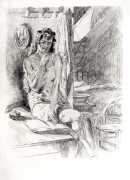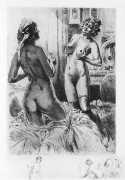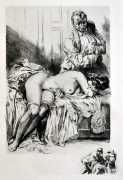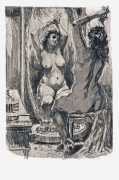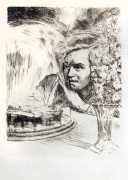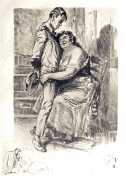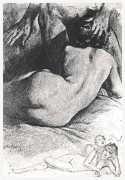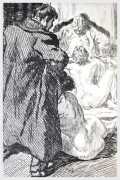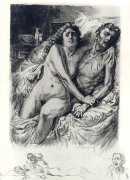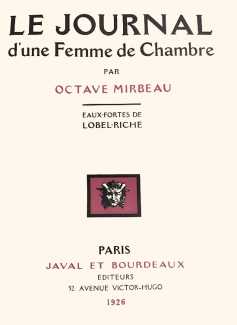 Le journal d’une femme de chambre (A Chambermaid’s Diary) is a subversive book in several respects. Its author, Octave Mirbeau (1848–1917) was an experimental avant-garde writer of transgressive novels which among other themes explored violence, abuse and psychological detachment. An anarchist, revolutionary, and fervent supporter of the Dreyfus faction in French political life, as a critic he also wrote in support of avant garde artists and writers including Auguste Rodin, Claude Monet, Camille Pissarro, Paul Cézanne, Paul Gauguin, Félicien Rops, Auguste Renoir, Félix Vallotton, Pierre Bonnard and Vincent van Gogh.
Le journal d’une femme de chambre (A Chambermaid’s Diary) is a subversive book in several respects. Its author, Octave Mirbeau (1848–1917) was an experimental avant-garde writer of transgressive novels which among other themes explored violence, abuse and psychological detachment. An anarchist, revolutionary, and fervent supporter of the Dreyfus faction in French political life, as a critic he also wrote in support of avant garde artists and writers including Auguste Rodin, Claude Monet, Camille Pissarro, Paul Cézanne, Paul Gauguin, Félicien Rops, Auguste Renoir, Félix Vallotton, Pierre Bonnard and Vincent van Gogh.

In Le journal Mirbeau takes on the hypocrisy of the French upper classes, portraying them through the eyes of the highly intelligent chambermaid Célestine. Her first employer fetishises her boots, a post which ends when she discovers him dead with one of her boots stuffed into his mouth. She then becomes the maid of an upper class couple, the Lanlaires, and is aware that she is being entangled in the power struggles of their marriage. But Célestine is not above class issues herself; in the end she becomes a café hostess who mistreats her servants as badly as she was treated herself.
Le journal was the most successful of Mirbeau’s novels, eventually being translated into nearly thirty languages. You can read the 1900 English translation by Benjamin Tucker online here. For a male writer to be able to understand so well what it was like to be a chambermaid was a considerable achievement.
Lobel-Riche shared many of Mirbeau’s views and concerns about a conservative class-ridden culture, especially the treatment of lower class women, and produced a powerful portfolio of etchings to accompany Le journal; his portrayal of Célestine brings Mirbeau’s words vividly to life.
Le journal d’une femme de chambre was published by Javal et Bordeaux in a limited numbered edition of 375 copies.


